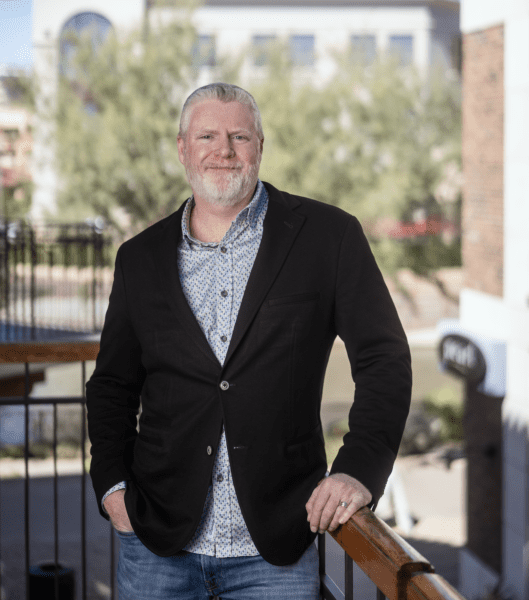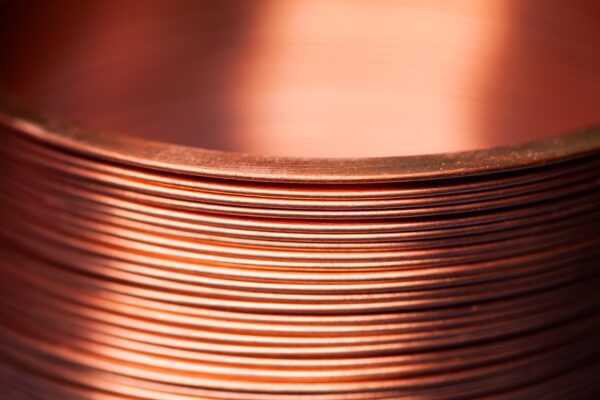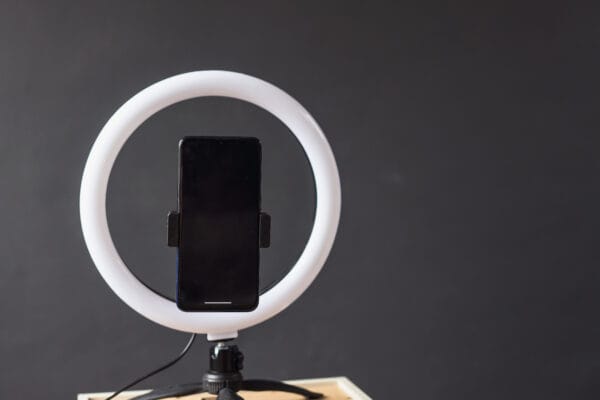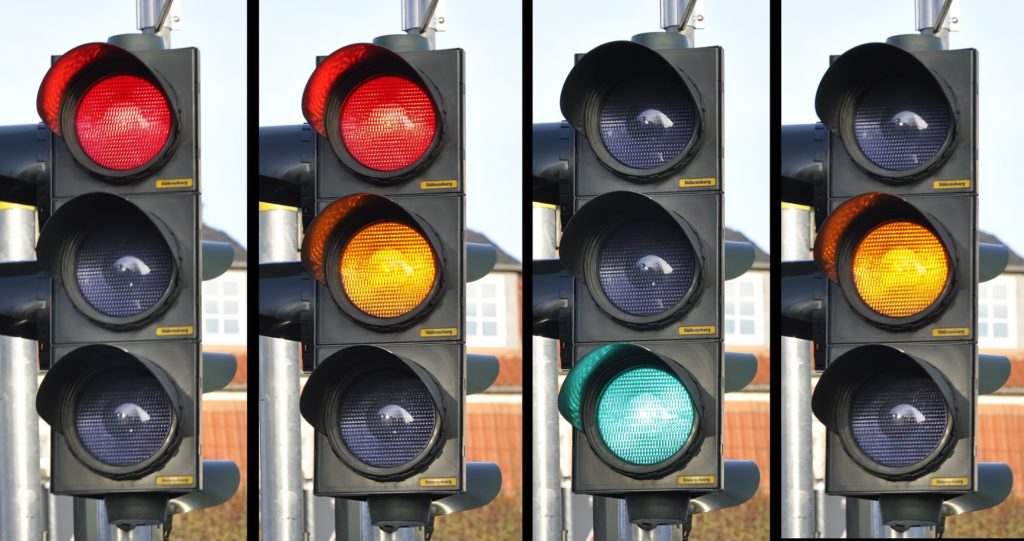
By Paul Basha, traffic engineer, Summit Land Management
Some easy questions require complex answers. The very purpose of a traffic signal is to give everybody a turn to drive through an intersection. For every green light, there is also a red light. When we have a red light, someone else has a green light.
One Scottsdale City Council meeting in the mid-1990’s comes to mind. At the time I was Scottsdale Traffic Engineer, and the City Council made every traffic signal installation decision. A certain – now long-closed restaurant – requested a traffic signal at a poorly spaced intersection. I explained to Mayor Drinkwater and the City Council that if we were to install a traffic signal at the requested intersection; the result would be increased stopping, delay, and congestion. Mayor Drinkwater, always searching for a compromise, in jest suggested that we install the traffic signal to provide greater visibility for the restaurant, but time the signal so that it was always green. So, the Council directed the signal installation, where it has been stopping cars every two minutes, continuously for 25 years.
The goal of every signal timing traffic engineer is to provide as many consecutive green lights for as many cars as mathematics and physics permit.
Consider a hypothetical street two miles long with five traffic signals each separated by one-half mile. Should be 2.5 miles, you say? Actually No, five fingers have only four separations.
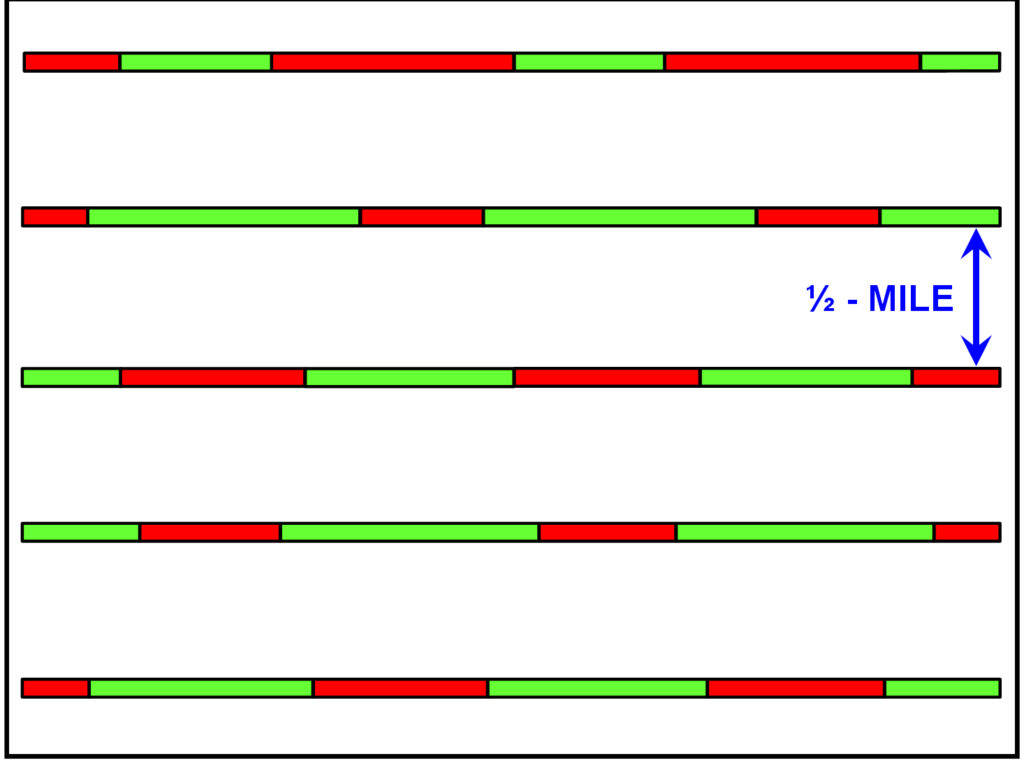
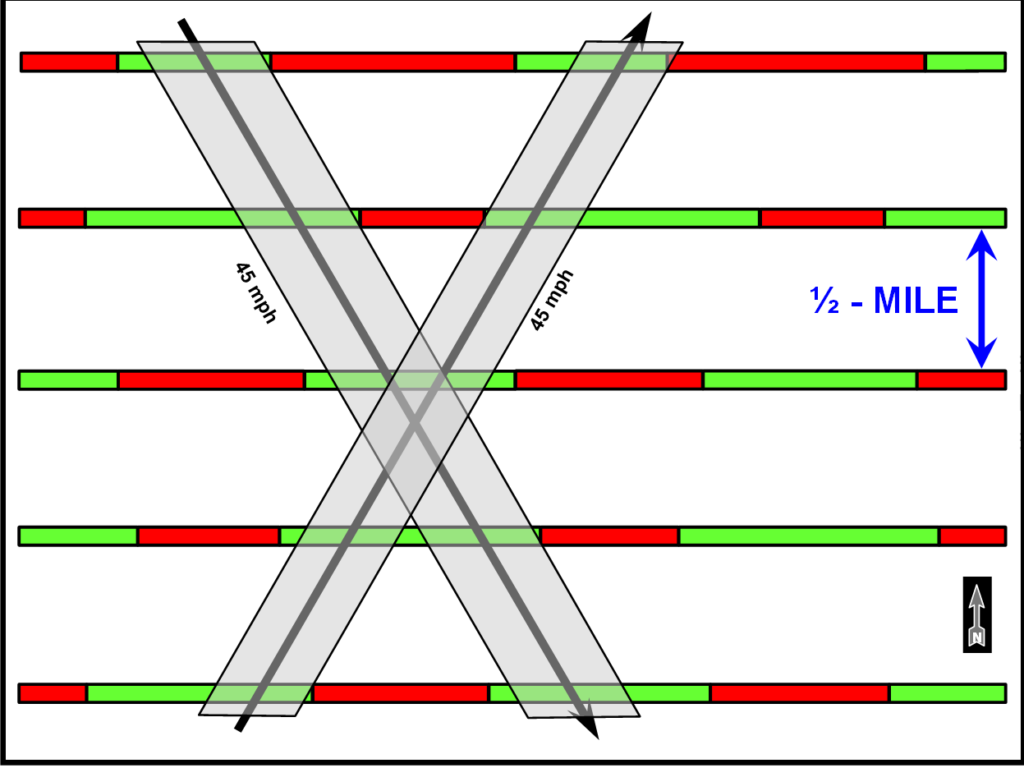
Next, the street has a speed limit of 45 miles-per-hour. We’ll add diagonal lines that represent vehicles traveling at 45 miles-per-hour in each direction. Both northbound and southbound vehicles receive green lights at each of the five intersections. Very good.
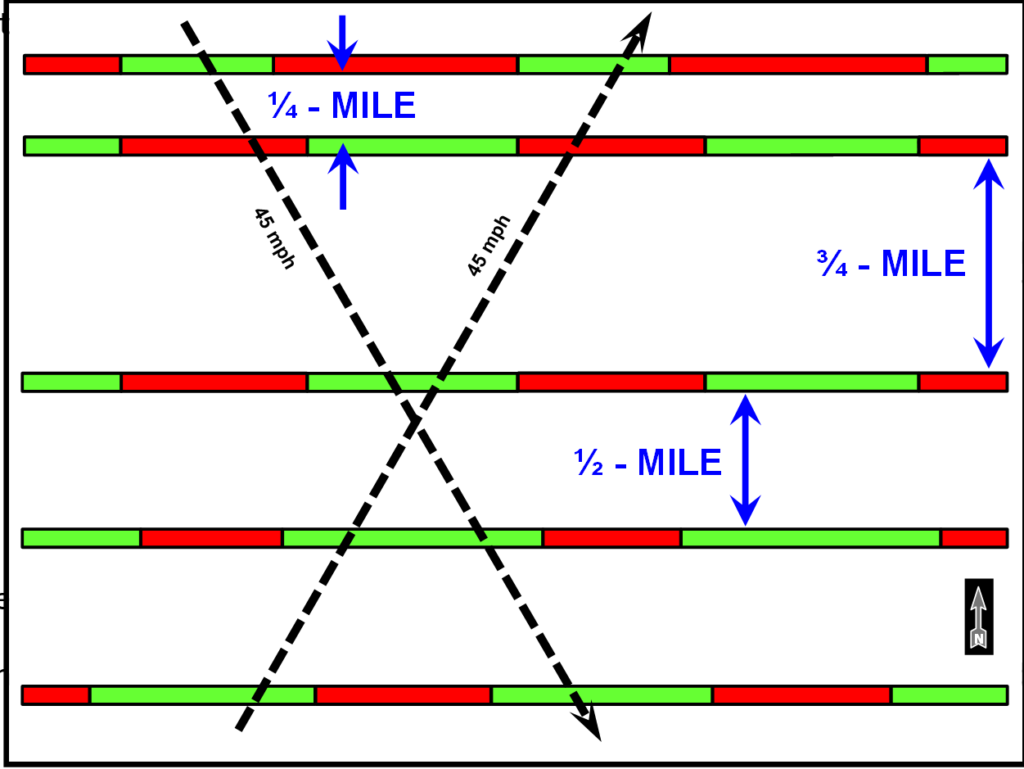
Now we’ll move one of the half-mile signals to a quarter-mile intersection. The mathematics is no longer our friend. The lines for vehicles traveling at 45 miles-per-hour go through the red bars of the new quarter-mile signal.
Best for everyone if we do not duplicate this little diagram when we drive. Bad things happen when a vehicle drives through a red light.
And it gets worse. Not only do the black dashed lines get red lights, there’s red lights for cars traveling at 45 miles-per-hour at several times as shown by the little red arrows.
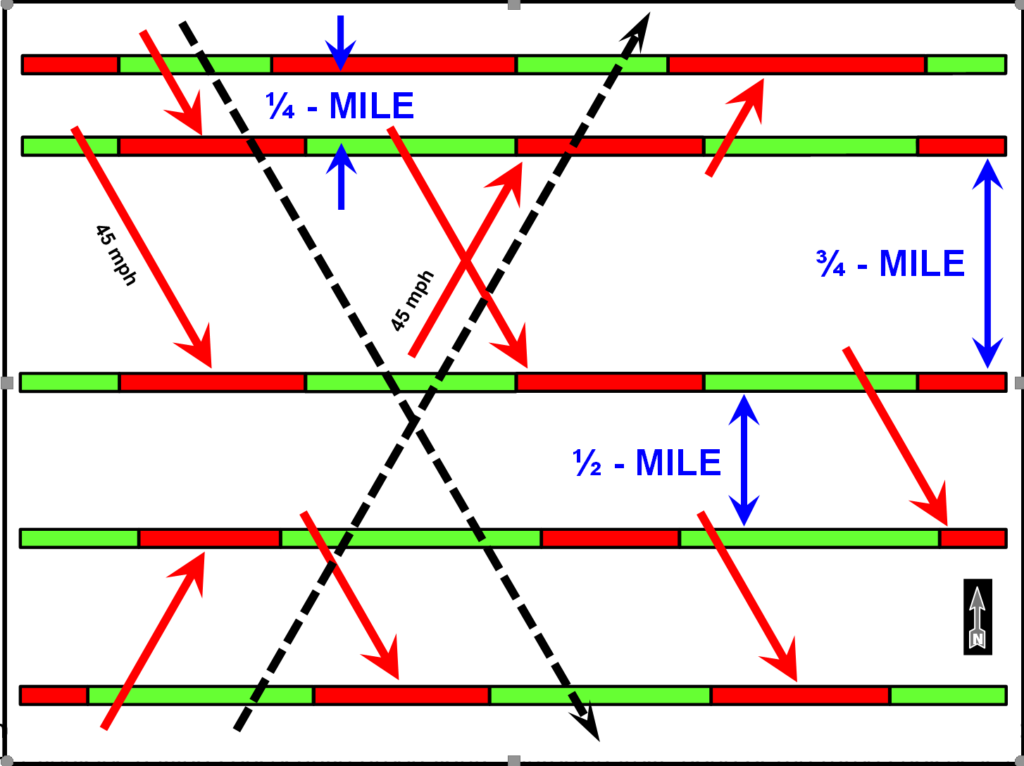
One would think smart people could solve this problem – with all due respect, we made it to the moon and back several times. Mathematics and physics offer us three choices to achieve the goal of most vehicles having consecutive green lights. Unfortunately, none of the three choices is perfect, though each is helpful.
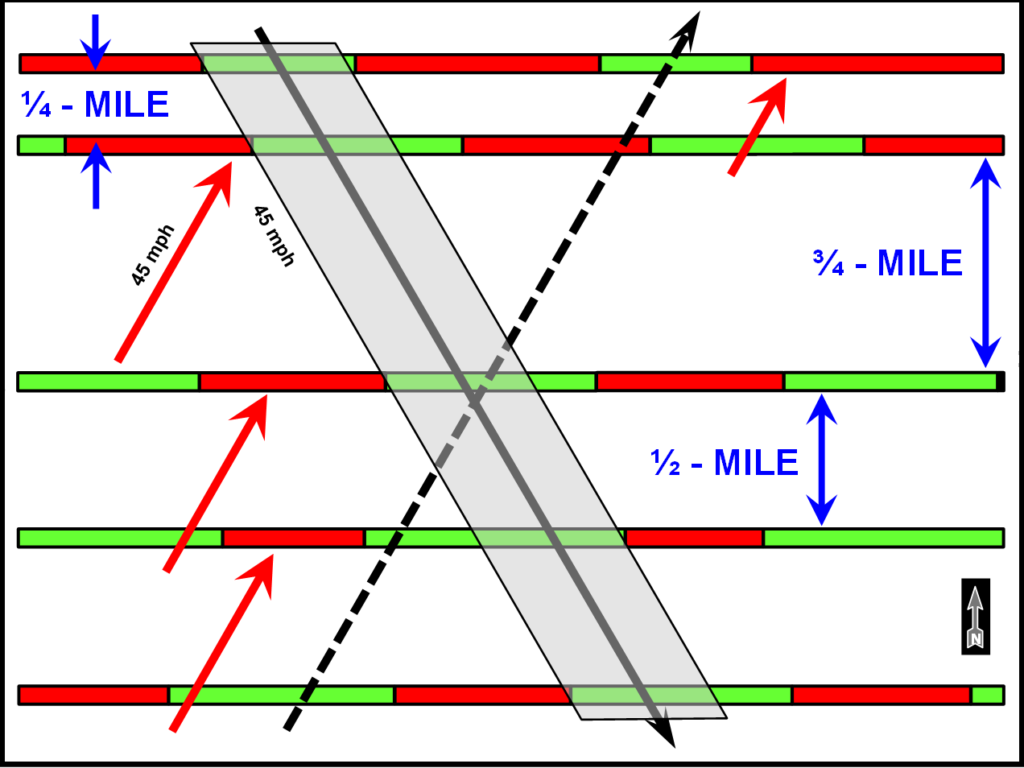
Plan 1. Good news: southbound has consecutive green lights, and for much of the green indication. Bad news: northbound stops often, and at intersections other than the quarter-mile signal.

Plan 2: Good news: northbound has consecutive green lights, and for much of the green indication. Bad news: southbound stops often and at intersections other than the quarter-mile signal.
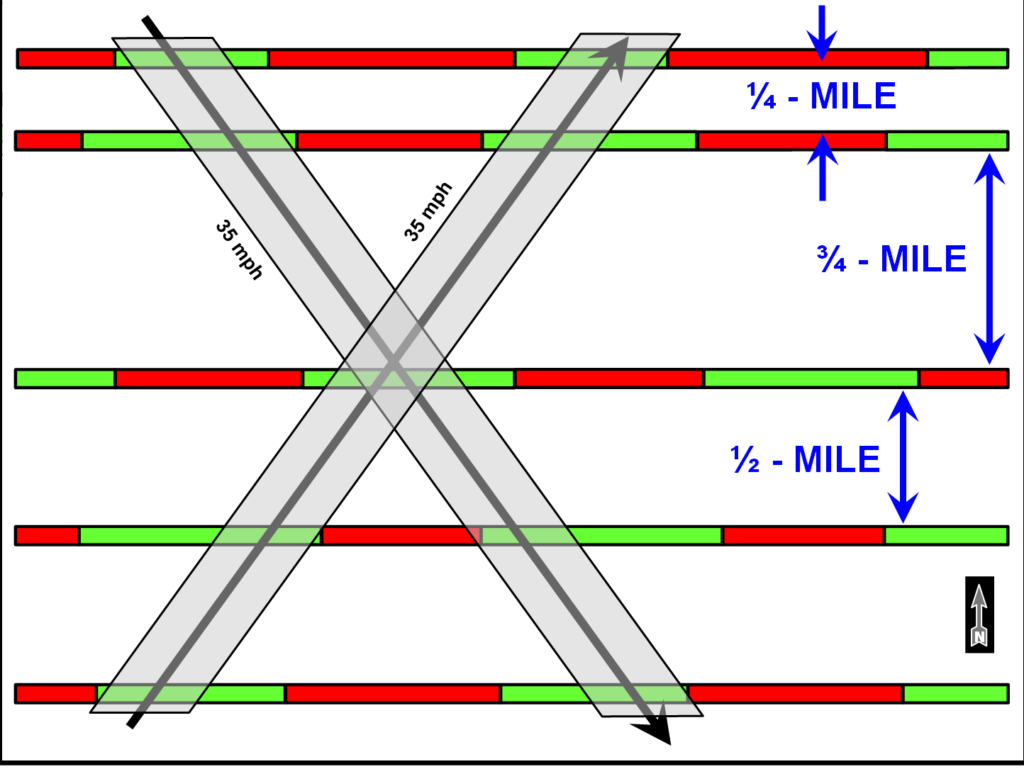
Plan 3: Good news, both directions have consecutive green lights. Bad news: vehicles must drive at 35 miles-per-hour to see green.
Traffic signals separated by half mile intervals can be timed to provide consecutive green lights for opposing directions of vehicle travel on the same street at speeds of 40 to 45 miles-per-hour. With signals separated by less than or greater than one-half mile, drivers often receive several red lights. The best that mathematics and physics allow is consecutive greens for one direction or the other, or slower speeds.
Most communities in the Valley have three or four signal timing plans: one plan in the morning when people are driving toward work, another in the afternoon when people are driving home, and the other one or two plans when people are driving in both directions. The best communities in the Valley have 10 to 20 different signal timing plans – recognizing that mid-morning, mid-afternoon, and evenings have different traffic patterns than each other, and that Friday, Saturday, and Sunday are each different than Monday through Thursday.
Oh, and left-turn arrows magnify the problem as the green and yellow left-turn arrows make longer red lights for through movements. Side streets have sensors, so these drivers only get a green when cars are present – which unfortunately is typically at least once every two minutes.
Better answer – roundabouts. Why should the government control my stopping and going? We can take turns just fine. Driving slow continuously and only turning right is faster than go-stop-go. Well maybe not Hayden and Indian School. Though another Arc de Triomphe might look good there.
Finally, the little example diagrams were for only 5 signals in 2 miles with only one at one-quarter mile spacing. One street close to my home has 20 signals in 5 miles. Another nearby street has 12 signals in 3.25 miles – including a segment with 6 signals in 0.75 miles. Another Valley city has 11 signals in 3 miles.
Yeah, getting to the moon and back was easier – until we put traffic signals between here and there.
Curious about something traffic? Contact Paul Basha at (480) 505-3931 or pbasha@summitlandmgmt.com.









